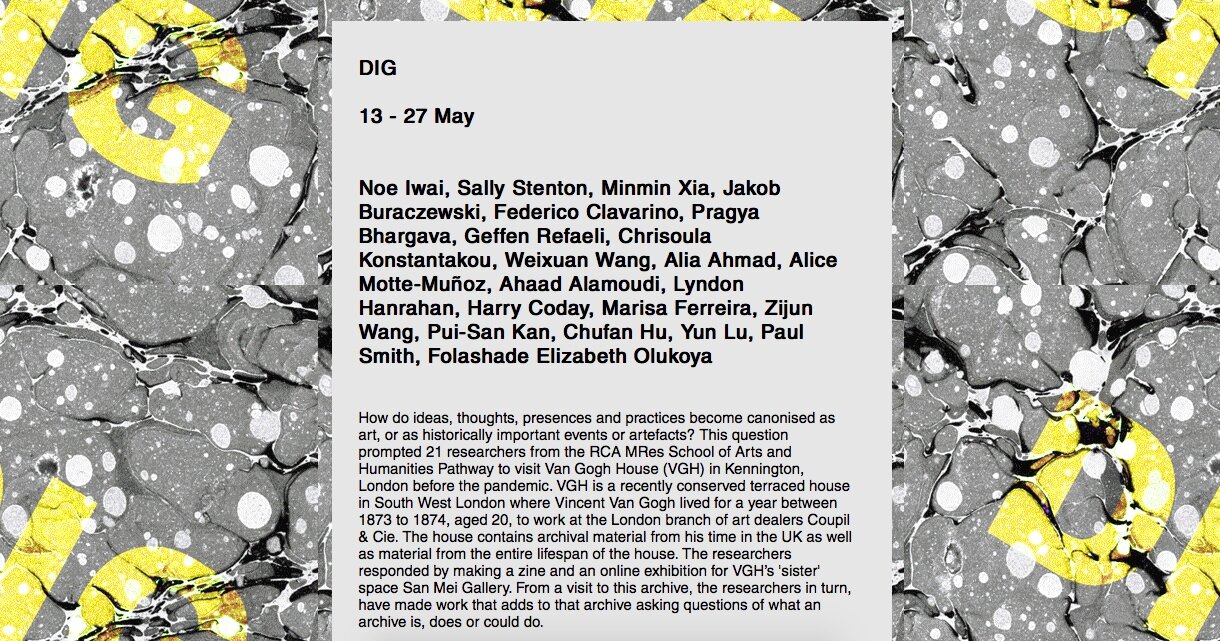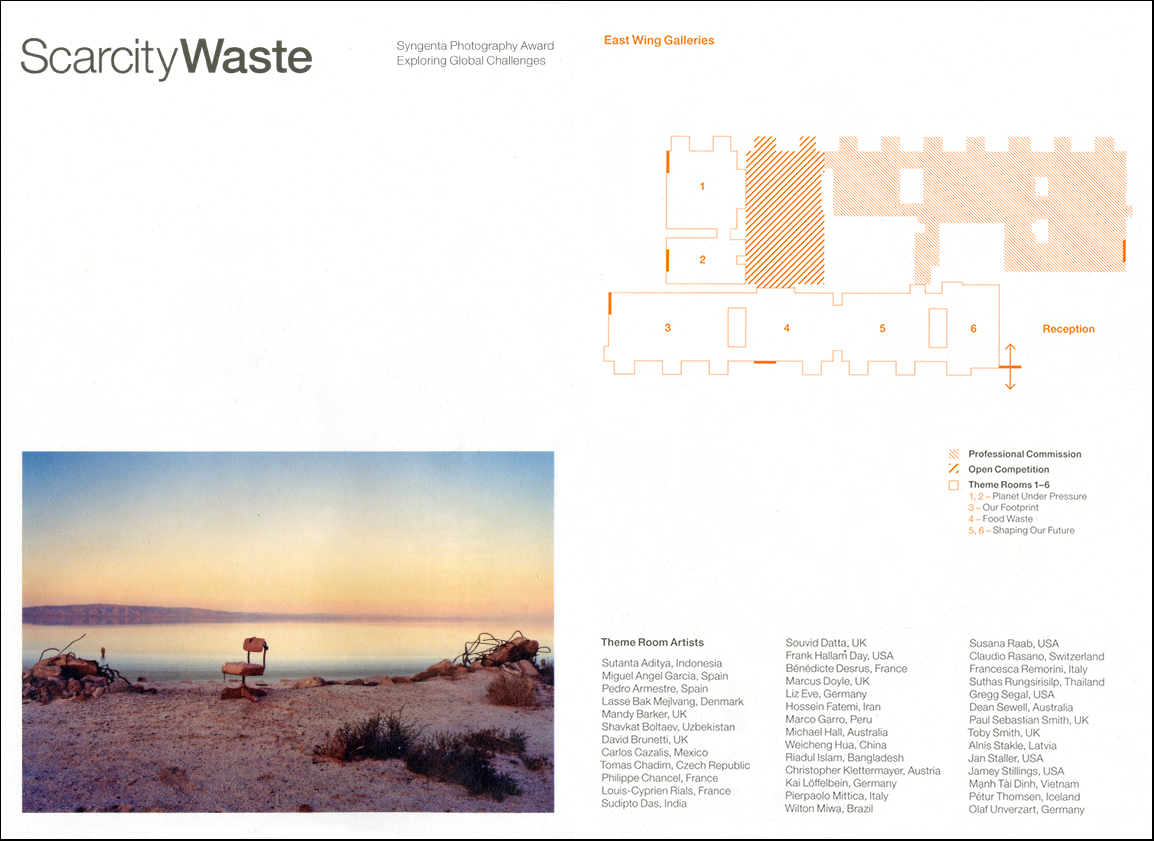News
Not Our Future (Artist Statement)
The Wendover Active Resistance camp was located on a narrow area of land between the A413 and the local Chiltern railway line south of the town of Wendover, Buckinghamshire. Destroyed in late-2021 the camp opposed the local construction of the HS2 railway line and their handling of local ecology. The camp housed a tunnel, built treehouses and erected a fifteen-meter high tower all in order to keep the eviction team at bay. Taken in late-2021 the photographic work Not Our Future presents the activists, their environment and the materials used to promote their cause. Alongside the photographs are appropriated banners and flags that present a narrative of their protest. The work brings together a time in recent past which formed a resistance to the ongoing fight with the HS2 development.
Not Our Future (Queens Park Art Centre website)
Having made their home in Wendover, Buckinghamshire a group of squatters have transformed a plot of land into a community space that opposes the construction of the ongoing HS2 expansion. The work Not Our Future considers the subjects and objects associated with both the structural and natural change within the camp whilst giving insight into how the land is being used to promote a positive angel of a thoroughly unique off-grid lifestyle.
Paul S. Smith is a Lecturer in Photography at Buckinghamshire College Group. His photographic work focuses on the alternative communities in the United Kingdom, Europe and America. In 2013 he was published and exhibited as part of the one-hundred photographers in New Dutch Photography Talent 2013. In 2015 his work, focusing on the wastelands of South London, was shortlisted and exhibited for The Syngenta Photography Award at Somerset House, London; where the work went onto tour South America, at the Centro Cultural de São Paulo – Brazil, under the title: Scarcity-Waste. After completing a Masters in Research at the Royal College of Art in 2020 his current work considers the people, landscape and ephemera of North Edinburgh’s housing schemes. His project Martello Court is ongoing.
Martello Court
Interview with Colin McPherson for Document Scotland, ‘Returning to Muirhouse: Martello Court’, 11th September, 2020
We caught up with Paul and asked him a bit about his work and the approach he is taking to making it.
DocScot: Can you tell us a bit about the project?
Paul S Smith: The work Martello Court is a five-year project which began in early-March 2020 during my studies at the RCA, London. With the project I hope to give an objective eye to the people that live and work in Muirhouse, giving myself an opportunity to understand a place that dominated the imaginations of my childhood. As stated by Document Scotland’s Stephen McLaren in 2018: “Places in which we grow up rarely leave us, they exert a pull across the decades and often force us in later life to re-examine how we have become the person we are today“.
DS: The inspiration to do the work goes much further back, to your family’s time in Edinburgh…
PSS: In the summer 1987 my father gained the position as the headmaster of the prestigious public school – Edinburgh Academy. As a family we all moved to city from High Wycombe, Buckinghamshire and lived within the school grounds. My sister and I (aged eight) were fortunate enough to attend the school for free. With a Dutch mother, English father and little understanding of Scotland, we had to adjust to life in Edinburgh. I subsequently spent my adolescence there, although not always fitting in with the etiquette of public school life. It was not until the early-1990s that I first heard of Muirhouse.
It was the first class of the day at the senior school I overheard a class mate of mine describing how his brother had just been attacked whilst visiting Murihouse; a housing scheme toward the periphery of north Edinburgh (a scheme that would later be the setting for the book and film Trainspotting). He was angry, talking about his disgust of the place and the people who lived there. What I remember most is his portrayal of the poor state of the housing, describing the residents as “animals”. Rather than being appalled by his story I became instead fascinated in what I had heard. As already having the feeling of an outsider at the school, I wondered where this place was and what the residents really looked like. Way before the invention of Google Maps and, despite being just over a mile from where I lived, I never visited the scheme – instead cycling along, what I saw as the safety of, Ferry Road and occasionally looking over to where the scheme was, hopefully passing residents who were leaving and taking a bus to the city centre.
DS: The urban landscape there is dominated by Martello Court. This then became the inspiration for the project…
PSS: Within Muirhouse is the tower block Martello Court which during the 1970s became known because as Terror Tower. Standing twenty-three stories high, the block can be seen from a distance. I remember using excuses to visit Edinburgh Castle, Carlton Hill and Arthur’s Seat just to see the tower block from that distance – never telling anybody of my intention. What I liked was that despite the towers marginal location it still had a narrative within the city’s consciousness.
DS: It’s quite a leap from you as a boy to working on a photography project in the area all these years later. How did it come about?
PSS: The project Martello Court began whilst I was studying on the Masters of Research (MRes) at the Royal College of Art, RCA (finishing October 2020). As a class we were asked to respond to a page from any book that had particular significance to us. Wondering what to do I opted for Trainspotting. I decided to select a page where the name ‘Muirhouse’ was first used; then marked all the other words out. This activity helped to highlight the housing scheme away from the framework of the text. I presented the work to my class the next week. Unbeknown to me this was to be the starting point for the project; as during my first tutorial – and lengthy conversations about Scotland, outsider identity and the various housing schemes of North Edinburgh – my tutor finished by saying: “Well, I guess you’re going back to Edinburgh then!”.
DS: How did you start the photography in Muirhouse?
PSS: My first point of contact was the concierge at Martello Court, Gabriella, who put me through to the head of Martello Court Residence Association – Etta McInnes. Etta is an 88-year-old third floor resident and she gave me access to the garden, offices and stairwell in the building. She is my future point of contact for the next few years. Etta has lived on the estate for 30 years and ‘runs the show’; in fact after spending time with her I did once refer to the block as Mar-Etta Court. I had the pleasure of meeting Etta’s son Ian, on my last visit in August, who about of mother: “You didn’t have to even watch the news, you just need to go and talk to my mother and she’ll tell you everything, you know what I mean. She is better than Sky News.” Ironically, Ian went to school with both Irvine Welsh and Gordon Strachan, both former residents of the scheme.
DS: Did you have any doubts or anxieties about making the work?
PSS: I found the experience of the architecture of Martello Court at first daunting, but after meeting the various characters and nationalities that inhabit the space, I discovered a warm and welcoming environment – not at all as its reputation or nickname, Terror Tower, would suggest. For my photographic work I mapped out several areas that would best suit portraits around the tower block and, on the day of my shoot, I found the residents to be particularly involved with my project and understood my interest in the area and its present population. Despite of the ongoing COVID-19 pandemic I found the residents still happy to be photographed and interviewed on their views of isolation and their hopes for the future.
DS: Thank you Paul for sharing this work with us. We look forward to finding out how the project develops over the coming years. Good luck!
Virtual Exhibition at San Mei Gallery, London, 2020
How do ideas, thoughts, presences and practices become canonised as art, or as historically important events or artefacts? This question prompted 21 researchers from the RCA MRes School of Arts and Humanities Pathway to visit Van Gogh House (VGH) in Kennington, London before the pandemic. VGH is a recently conserved terraced house in South West London where Vincent Van Gogh lived for a year between 1873 to 1874, aged 20, to work at the London branch of art dealers Coupil & Cie. The house contains archival material from his time in the UK as well as material from the entire lifespan of the house. The researchers responded by making a zine and an online exhibition for VGH’s 'sister' space San Mei Gallery. From a visit to this archive, the researchers in turn, have made work that adds to that archive asking questions of what an archive is, does or could do.
Each researcher has made a work to be viewed online superimposed on San Mei Gallery’s floor plan. Additionally, each contributor has selected an artefact from an online archive in London or elsewhere that has acted as an intoxicant to their research, and made a response to it for the publication. To work Martello Court, Muirhouse, Edinburgh was presented as a standalone image with audio interview of local resident, and Head of the Residents Association, Etta McInnes. Please click the link to go through to the gallery’s website - https://www.sanmeigallery.co.uk/dig-5.
FLIP Magazine
For London Independent Photography (FLIP) is a community organisation for amateur and professional photographers with more than 500 members. Our activities are designed to bring together photographers with different interests and levels of expertise who wish to develop their personal approach to photography, improve their skills and gain recognition for their work. The magazine is funded entirely by annual membership fees (no sponsorship, advertising or outside funding) which allows us to provide a truly independent and public forum to share thoughts, exchange ideas and discuss our individual approaches to photography. For the PDF of the magazine please click on the link http://www.londonphotography.org.uk/magazine/pdf/FLIP44_spirited.pdf
Uncertain States, 2019
Uncertain States is an artist-led project that publishes and distributes a free quarterly broadsheet newspaper showing lens-based-art. Formed in 2009 by Fiona Yaron-Field, David George and Spencer Rowell, the group has grown over the past five years from a small core to a loose confederacy of over 100 writers, artists and academics who share the same ethos: that is, to create a platform for work that reflects some key social and political concerns and challenges how perceptions are formed in society on issues as diverse as politics, religion and personal identity.
In August 2019 work was exhibited in Uncertain States under the title ‘Transformations’. The images link to the ongoing project Grow-Decay and were displayed in locations across the United Kingdom, including the Baltic Centre for Contemporary Art, Gateshead and The Photographer’s Gallery, London.
Brighton Photo Fringe, 2016
Work was exhibited, as part of a group show, at The Dukebox Theatre, Hove for the Brighton Photo Fringe 2016. Entitled Covered & Exposed the exhibition focused on the violence and mortality hidden within the landscape. The work exhibited by Smith was from the on-going series Zinc that documents and exposes the Klu Klux Klan in Arkansas, America. To view the Fringe website and the work within Covered & Exposed click here.
The Syngenta Photography Award, 2015
The Syngenta Photography Award is a celebration of artistic skill and outstanding photography which aims to draw attention to, and stimulate dialogue around, key global challenges. This year’s award invited professional and amateur photographers from all over the world to submit applications responding to the theme of ‘Scarcity-Waste’.
The 42 photographers from 21 countries represented in the exhibition not only illustrate the ’Scarcity-Waste’ theme in striking and ambitious ways, but also take on the role of courageous advocates, showing deep concern for our planet. Taken together, their 90 images provide a unique voice to one of the greatest challenges the world faces: how in a world that is so desperately short of resources can we ensure that there is enough land, food and water for everyone and for future generations? To view Paul S. Smith's shortlisted photograph click here.
New Dutch Photography Talent 2013
New is an initiative of Dutch photography magazine GUP that features the best one hundred emerging Dutch photographers of 2013. New is a platform bringing Dutch based photography talents to the attention of galleries, museums, commercial and photography agencies, media companies and institutions that work with imagery.
With 420 pages and a print run of 2.500 copies New is viewed by art directors, curators and fellow photographers. New was available at The Photographer's Gallery and Tate Modern, London and can be purchased online at www.amazon.co.uk.
The Velvet Cell, 2012
As part of the Adrift Exhibition at the Truman Gallery in 2012, The Velvet Cell published the works of all competition winners. Included within the ten were the works of differing photographic styles, locations and themes. The work The Way Ahead by Paul S. Smith was part of the collection and can be viewed at www.gasket-gallery.com/adrift-publications-and-the-velvet-cell.
Adrift Opening, 2012
This video contains the work and interviews from the ten photographers taking part in the Adrift exhibition at The Truman Brewery, London in September 2012. The works were part of the Gasket Gallery, London.





Image taken from the Queens Park Arts Centre website focusing on the project Not Our Future.

Example of the private view invitation for the exhibition focusing on the HS2 expansion protest site in Wendover in Buckinghamshire. The work is to be exhibited at the Queens Park Arts Centre in Aylesbury.

Promotion for the upcoming exhibition focusing on the HS2 expansion protest site in Wendover in Buckinghamshire. The work is to be exhibited at the Queens Park Arts Centre in Aylesbury.

The work Not Our Future focuses on the peripheral community of HS2 protesters in the woods outside Wendover, Buckinghamshire. The exhibition consists of black and white images accompanied by sourced protest signs



The work Martello Court was created during the pandemic COVID-19 and is currently ongoing. An interview with Colin McPherson forms part of the final research piece of an MRes at the Royal College of Art, whilst simultaneously being published by Document Scotland in September 2020

As part of the MRes at Royal College of Art the work Martello Court was exhibited alongside fellow students and reflects the importance of art relating to artefacts.



A view of the digital layout of the online exhibition (Room Four) at San Mei, London, May 2020. The work included a audio interview with 88-year-old Etta McInnes - head of Martello Court Residence Association.




A front cover view and double-page spreads of the December 2019 edition of FLIP magazine. The magazine was titled Spirited and contained the work Grow-Decay and an article on the subjects who lived in a West London protest site

A social media post presenting the new publication of Uncertain States (issue 31) in August 2019. The publication featured the work and write up of Grow-Decay

An example of the layout for the double page spread in Uncertain States. The above images can be seen in the analogue issue, August 2019. All photographs were taken with medium-format Kodak Portra and scanned.

Image taken from the social media post from Uncertain States with the selected photographs and heading from the project Grow-Decay.

The Syngenta Photography Award was a exhibition at Somerset House, London, in 2015 which displayed ranges of artistic skill and outstanding photography which aims to draw attention to, and stimulate dialogue around, key global challenges.

The above image was taken from on-line marketing for the Brighton Photo Fringe 2016 which appeared in the Fringe newspaper. The Fringe exhibition ran from Friday 7th (Private View) until Sunday 9th October 2016 (as location 7) at The Dukebox Theatre, Hove. The photographers will be using the same space for the Fringe in 2018 for their exhibition Albion (2018).

A print out and floorplan from The Syngenta Photography Award 2015 which was on show at Somerset House, London, from 11th March to 10th April 2015. To review Paul Sebastian Smith's entry please click here.

A copy of the publication New Dutch Photography Talent 2013 by Peter Bas Mensink published by x publishers BV; 1 edition (12 Feb. 2013)

The video above presents the Adrift Gallery opening at The Truman Brewery in London (October 2012).

The Way Ahead - Published by The Velvet Cell, London (October 2012). The image above contains all ten published monographs.
